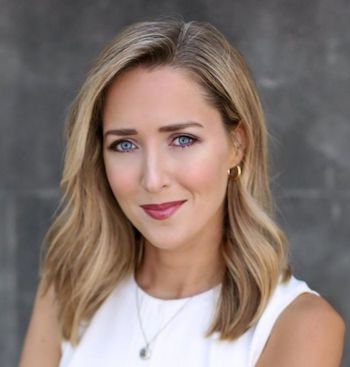Articles and News
White Noise: Getting Heard, Getting Real, And Getting Followers On Social Media | November 21, 2017 (0 comments)

New York, NY—Breaking through the clutter of radio and television was hard enough, but social media has turned the volume up to the point of “white noise,” i.e. something that barely registers in conscious thought. Add in a lack of regulation separating real from fake and it has become the communications equivalent of the Wild West.
A recent seminar titled “White Noise: Penetrating Social Media Today,” held during the 19th New York Fashion + Design Conference, sponsored by Initiatives in Art and Culture, addressed influencers, pay-for-play, and disclosure of paid endorsements. Panelists included Gary Wassner, CEO of Hilldun Corp., moderator; Robert Verdi, entrepreneur and celebrity stylist; Mary Orton, co-founder and president of Trove; and Julie Zerbo, an attorney, founder, and editor-in-chief of The Fashion Law.
“White Noise” was one of the most popular sessions during IAC’s two-day White: Palette, Prism, Possibility conference. The event explored how the color white impacts trends in jewelry, fashion, and even architecture, addressing everything from bridal gowns to diamonds, pearls, and even the iconic white shirt.
Robert Verdi’s original career was as a jewelry designer, but he couldn’t get a job in the field, so a job at ABC Carpet and Home turned him into an interior designer. After comedian Sandra Bernhard mentioned him on her show, a New York Times reporter wrote an article about him and the rest, he said, was history. He started a TV career, including both a home design show and his better-known stint on E! as Joan Rivers’ replacement.

Celebrity fashion commentator Robert Verdi. Image: Zimbio
Pop culture has shifted, said Verdi. “Everybody is a star. Everyone shares the beauty in their lives and their special moments—and even fabricates them. There was a time when we turned to more mature and experienced people for information, but now we ask 12-year-olds for style information! Now you can have a one-sided dialog with the world. It’s not conversational, not an even exchange.”
Both Mary Orton and Julie Zerbo studied economics in college. While working as an investment banker looking at a women’s retail clothing company, Orton saw budgets allocated to fashion bloggers.

Mary Orton, founder of Trove and memorandum.com. Image: Forbes
“I asked, ‘What’s a fashion blog? Who are these idiots putting pictures of themselves on the Internet—and how can I do that?’”
She was fascinated by the changing media landscape for fashion, and how brands connected with consumers. In 2013, she saw a demographic of urban working women who didn’t fit into any of the existing fashion archetypes, so she started a blog called Memorandum.com as a means of speaking to professionals with real interest in fashion and art.
From there came Trove, a mobile shopping and style app. Orton saw that with the rise of Instagram and the migration of consumers from traditional media to places like Instagram for inspiration, they were still largely unable to shop there. She saw tremendous opportunity for consumers who wanted a high-quality fashion experience and quality content to seamlessly integrate with shopping.
“At that time social media platforms were in nascent stages, so there was opportunity to grow if you produced authentic content. ‘Authentic’ is an overused word but it’s important. If you produce relatable content, people will find you and follow you.
“Facebook, Twitter, and Instagram were really driven by organic independent content creators. Now, however, independent content creators are hit by algorithms that favor entities with multimillion dollar marketing budgets. Sites realized they have to make money, so for independents they’re probably not going favor you in their algorithm and get you in front of consumers.”
Julie Zerbo, the attorney, addressed the issue of disclosure of paid influencers.

Fashion attorney Julie Zerbo. Image: exposedzippers.com
“Now that you can’t tell real from fake media we need watchdogs, someone to look out for whether images are being credited, et cetera. Millennials and Gen Z have the assumption that what someone is wearing is their choice, so we have a little truth-in-advertising issue.”
Zerbo started a fashion blog in her first year of law school. During that time, she called out some of the most fashion houses in the world for copying.
“I’m still shocked that I didn’t get an angry letter!” she laughed. Later, however, she did get a cease-and-desist letter from the fashion trade newspaper Women’s Wear Daily, because in her blog she revealed that critics who go to fashion shows are showered with gifts with the quid pro quo expectation that they’ll write a positive report about the show.
But instead of shutting her down, it landed her a writing gig. “I told WWD their legal content wasn’t that good and said ‘let me do it.’
“I’m a Millennial. I take opportunity everywhere!” she laughed.
Verdi took issue with the fact that influencers are not necessarily experienced or even knowledgeable like long-time members of the industry are.
“The front row [at fashion shows] has traded off the editors and writers for these self-appointed experts. How many bloggers would be invited back if they said something bad about a brand? They also don’t understand or know the history of fashion or the context in which trends emerged. There are not a lot of people who can review a collection like [former New York Times fashion critic] Cathy Horyn. They don’t have the depth of knowledge or provocative mind necessary. Something about this medium that provokes insecurity and falseness.”
It’s a shift that goes far beyond the fashion industry, said Gary Wassner. “There used to be gatekeepers. To get ahead, you needed to go through people who would bring you to the next person and the next person. Now those gatekeepers are gone. You don’t need editors or buyers at department stores to make you famous. Everyone is going direct to public and now anyone can reach their audience.” Getting beyond a few select arbiters of taste is good but losing the chance to get experience is bad, he added.

Gary Wassner, CEO of Hilldun Corp.
Orton agreed. “There’s frustration when we see a blogger or someone with a popular Instagram account who doesn’t approach the industry with the knowledge we hope someone would have, but there are also so many wonderful things that those voices have brought to industry. It was becoming an ivory tower and very homogenized, so voices like Leandra Medine had tremendous impact on the democratization of content and talent in the industry.”
The real issue is transparency, she said. “You need to protect the consumer and disclose when you have paid relationship with the brand. When you see a Tide commercial on ABC’s Scandal there’s no expectation that the actors are using the product. But when I’m saying I’ve worn Tibi for years long before I had a blog, and they reached out because I had a blog and they wanted to work together in paid capacity and I can endorse the product because I wear it, that’s a different thing. But it definitely has to be disclosed.”
What’s challenging on the part of the content creator is the use of words like “advertisement” and “sponsorship” in creating content, she said. “If you poll 10,000 consumers and ask what does the word advertisement or sponsorship mean to you, images of billboards or TV commercials would be first. With influencers, I not only use the product, I recommend it. I only accept paid sponsorships if I would spend my own money for it. For example, if REI asked me to promote nylon camping clothes, that’s not a fit for my audience.”
Gary Wassner jumped in. “People will go ahead until someone like Julie [Zerbo] comes around and calls them on it.”
“The FTC has put forth a whole list of disclosure language that I think is important to be accessible and readable for bloggers,” said Zerbo.
One issue is the distinction between celebrity and influencer. Well-known celebrities like Jennifer Aniston don’t necessarily have to use a disclosure statement because there’s a general consumer expectation that she has been sponsored, said Zerbo. But the distinction becomes murkier for people like Kim Kardashian, who became famous for her influence, rather than influential because of her fame. The FTC has sent letters to many such celebrity influencers, she said.
“Social media developed much faster than the FTC can keep up. I worked on Capitol Hill and I know how slow it works. This is more on the FTC than the bloggers.”
Further reading about how to use influencers here and here.
Top image: iTunes/Apple







